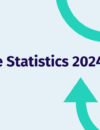
Using the right pronouns when addressing or introducing colleagues is a crucial part of ensuring that everyone feels included and welcome within your working environment. Just as someone’s name is a huge element of their identity, so too are their pronouns.
But what are pronouns? Well, they’re what you use in place of someone’s name: specifically, he/him, she/her or they/them. You might even see ze/zir, xe/xem, ey/em, or other versions. The list is extensive.
We use pronouns in everyday conversation almost without noticing; but it’s important to pay attention and ensure you’re using the right ones for the right people.
Misgendering someone, and using the wrong pronoun, can be offensive and disrespectful. It’s no different to getting someone’s name wrong. This is important to remember regardless of whether you’re having an informal conversation, writing an email, having a meeting or sending out important internal or external communications.
Using the correct pronouns is a vital part of cultivating an authentically inclusive and equal workplace (and world!). Identity, gender and sexuality are all still areas that need improvement in the working environment. According to Stonewall, over one third of LGBTQIA+ staff have hidden their identity at work for fear of discrimination, and nearly 1 in 5 LGBTQIA+ people “said they were discriminated against because of their sexual orientation and/or gender identity while trying to get a job in the last year”. Appallingly, “12 per cent of trans people have been physically attacked by customers or colleagues in the last year because of being trans”, too.
Normalising the use and understanding of pronouns in the workplace can be a small but significant step in creating and maintaining an open and welcoming space, helping to tackle these injustices and raise awareness.
You might start doing this by:
- encouraging adding pronouns to email signatures
- encouraging adding pronouns to social media accounts
- giving people the chance to include their pronouns when introducing themselves in meetings, during training sessions, and even at workplace events
As with many elements of ED&I, it’s not always straightforward, and there are some things you need to remember when making these changes.
Don’t make pronoun sharing compulsory.
It should be a choice. “It’s worth noting for some LGBTQIA+ people, disclosing their pronouns may be a source of anxiety, so it shouldn’t be forced upon anybody. Instead, allowing employees to decide for themselves if they want to include them or not gives them the freedom to do so without the fear of criticism,” says Maria Dahlquist Canton, VP Marketing at Exclaimer.
There’s a risk that, in doing this, you’ll be unintentionally shining an unwanted spotlight on your LGBTQIA+ colleagues. Furthermore, it could feel forced and even performative. This needs to be genuine.
If you’re encouraging pronouns as part of an introduction session, for example, use phrases like ‘if you wish’ or ‘if you’d like to’ to avoid forcing people into difficult or uncomfortable situations.
It’s not just for your LGBTQIA+ colleagues
Again, you need to avoid singling out one group or community. Even if someone feels their identity is ‘obvious’, they should still feel welcome to take part in these activities or changes. Normalising disclosing pronouns is very important.
Don’t say ‘preferred’
You might hear people discussing ‘preferred pronouns’, but you should be mindful of this language. Using the word ‘preferred’ makes it sound like using those pronouns is optional, when it shouldn’t be. It’s like saying “My preferred name is Alex.” and then someone feeling they can call you “Yaz”.
If in doubt, say ‘they’
If you are ever in doubt of someone’s identity or pronouns, always use gender neutral options like ‘they/them.’ Never make an assumption.
This is also important when addressing a team. Keep things gender neutral when sending out company comms, emails and messages. Additionally, if you’re in a position where you give speeches, talks or seminars regularly, avoid terms like “ladies and gentlemen”. There are so many neutral and inclusive alternatives out there!
Don’t make it a big deal
If you get someone’s pronouns wrong in a meeting or an email, and they correct you, don’t make a fuss. This will only draw attention to the situation and could cause discomfort. Recognise your error, apologise, and make sure you use the correct pronouns moving forward.
It’s OK to ask
If you aren’t sure, it’s a great idea to ask what pronouns someone uses. You might feel uncomfortable doing it, but it’s important to get it right. The team at Vyond sums it up well: “You might fear an awkward conversation when asking someone about their pronoun use, but even a small amount of awkward tension is better than unintentionally devaluing someone’s identity.”
Many companies are already leading the way and including pronouns as a core part of their inclusivity work. Thames Water is one of Stonewall’s Top 100 Employers; among their many commitments, they have “implemented a refined email signature policy to include pronouns which has been rolled out across the company.”
Halifax has also recently been in the news for adding pronouns to their name badges. When unhappy customers expressed their desire to leave the bank, claiming ‘virtue signalling’ and ‘propaganda’, Halifax stood by its decision; their social media team even shared the steps angry tweeters would need to take to close their accounts!
In response, Halifax stated: ‘We want to create a safe and accepting environment that opens the conversation around gender identity. We care about our customers and colleagues’ individual preferences, for us it’s a very simple solution to accidental misgendering.’
Making changes to support LGBTQIA+ communities within the workplace can have positive impacts on your organisation as well as your colleagues and employees. Maria Dahlquist Canton continues, writing:
“A recent study revealed that companies that encouraged disclosing pronouns led to more positive attitudes towards their employer, as well as an increased confidence that the company would treat all employees fairly.
“A work culture focused on gender inclusion has the power to elevate previously unheard voices and value diverse experiences, which fosters an environment of respect and trust. This type of environment not only attracts more diverse applicants, but also has all of the structural supports in place to set them up for success.”
Last month may have been Pride month, but it’s important that activities to improve equality and inclusivity take place all year round, not just in July. Embed LGBTQIA+ commitments within your workplace culture for good.
And remember, introducing and encouraging the use of pronouns should be part of a wider set of activities such as training sessions and networking programmes. Learning and change should be a continual, human, evolutionary process.
At Druthers, it’s our mission and our passion to empower organisations to find the best person to make an impact on their work, from a diverse shortlist of remarkable talent. Get in touch with us to find out how your business can make a positive change to your hiring and retention processes.





